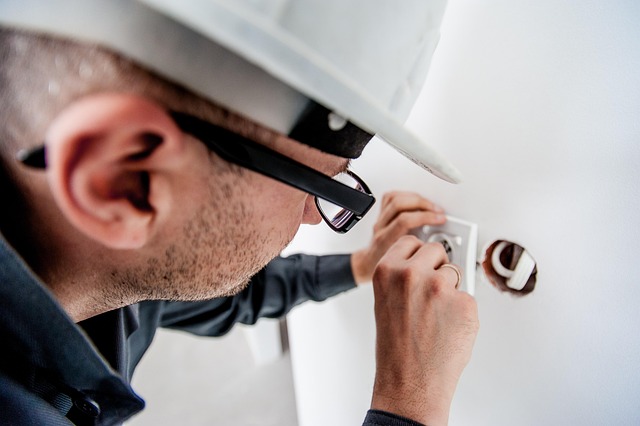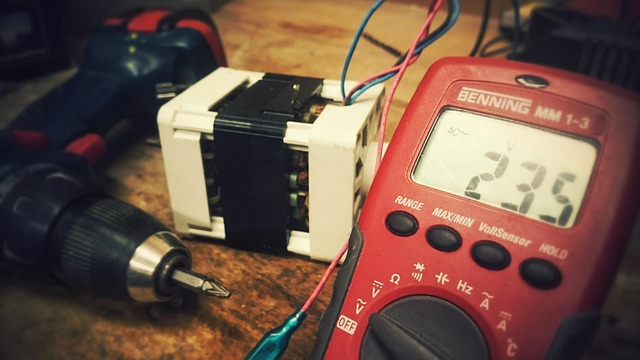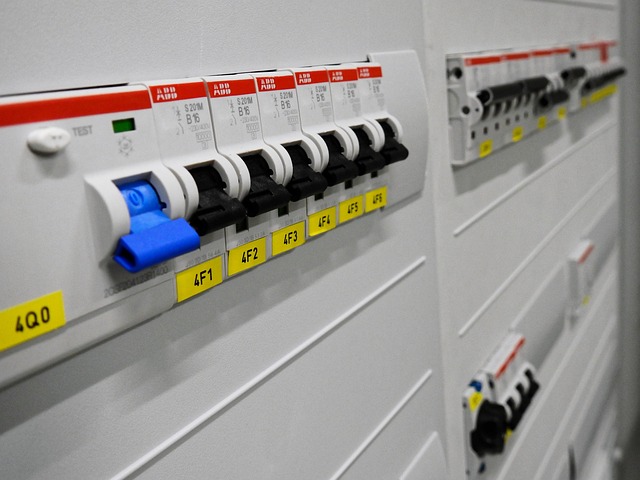In the average home, switches, receptacles, and outlets are often taken for granted until they fail. Understanding common electrical issues and knowing when to repair or replace these components is essential for any homeowner. This guide explores typical problems, safety precautions, and cost-effective solutions, helping you decide whether to DIY or hire a professional electrician. Learn the signs, tools, and best practices for maintaining your home’s electrical system.
- Understanding Common Electrical Issues in Homes
- When to Repair vs Replace Switches and Outlets
- Tools and Safety Precautions for the Job
- DIY vs Hiring a Professional Electrician
Understanding Common Electrical Issues in Homes

Many home electrical issues are common and can often be traced back to switches, receptacles, or outlets. A qualified electrician should assess any concerns regarding these components. Worn-out switches may cause flickering lights or circuit breaker trips, while faulty receptacles could lead to sparking or a burning smell. Outlets that are loose, hot to the touch, or fail to supply power can indicate wire connections or grounding problems. Regular maintenance and prompt repair or replacement of these parts are essential for home safety and stability.
Electrical issues may seem minor but can escalate quickly if not addressed. A professional electrician is trained to identify subtle signs of trouble and provide effective solutions. They can replace old or damaged components with modern, energy-efficient alternatives, ensuring your home’s electrical system operates safely and efficiently.
When to Repair vs Replace Switches and Outlets

When deciding whether to repair or replace switches, receptacles, or outlets, there are several factors an electrician should consider. Repairing is often the best option when the damage is minor and limited to a single component. For example, a loose connection in a switch or outlet can be tightened, addressing the issue without replacing the entire unit. This approach saves time and money while minimizing potential disruptions to your home’s electrical system.
However, if the damage is extensive, involving multiple components or safety concerns, replacement might be necessary. Worn-out switches or outlets that show signs of overheating, burning, or physical damage should be replaced outright. An electrician will also recommend replacement if outdated wiring poses a risk or if modifying the setup for repairs would result in subpar performance and safety standards.
Tools and Safety Precautions for the Job

Before tackling repairs or replacements of switches, receptacles, and outlets, gather the necessary tools, including wire strippers, pliers, voltage testers, and a multimeter. These tools are essential for safe and effective work. A voltage tester ensures you don’t work on live wires, while a multimeter can help identify faulty components. Always prioritize safety by wearing protective gear, such as gloves and safety glasses.
Turn off the power at the main electrical panel to prevent accidents. This is a crucial safety precaution that an electrician would always recommend. Verify the power is off using a voltage tester before proceeding with any work. Additionally, label or temporarily remove circuit breakers to ensure they’re not activated during repairs, further emphasizing the importance of thorough testing and caution.
DIY vs Hiring a Professional Electrician

Many homeowners wonder whether they should tackle electrical repairs, such as repairing or replacing switches, receptacles, and outlets, themselves or hire a professional electrician. While DIY projects can be satisfying and cost-effective for simple tasks, electrical work is best left to licensed professionals. Working with electricity carries inherent risks, including the potential for shocks, fires, or other hazards that could lead to serious injury or property damage.
Professional electricians are trained and experienced in handling a wide range of electrical issues safely and efficiently. They have access to the right tools and equipment and adhere to strict safety protocols. Hiring an electrician ensures your work complies with local building codes and regulations, which can be crucial for maintaining the safety and value of your home. Additionally, professionals offer peace of mind knowing that the job is done right the first time, saving you potential future headaches and costly repairs.
When tackling electrical repairs, knowing when to replace switches, receptacles, or outlets is crucial. By understanding common issues and following safety guidelines, DIY enthusiasts can handle minor fixes. However, for more complex situations, hiring a professional electrician ensures the work is done safely and correctly. Whether choosing DIY or an expert, staying informed on electrical maintenance is key to preventing future problems.
